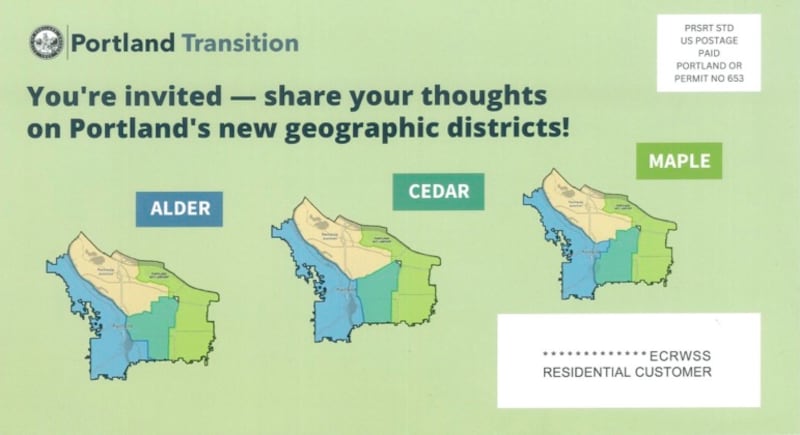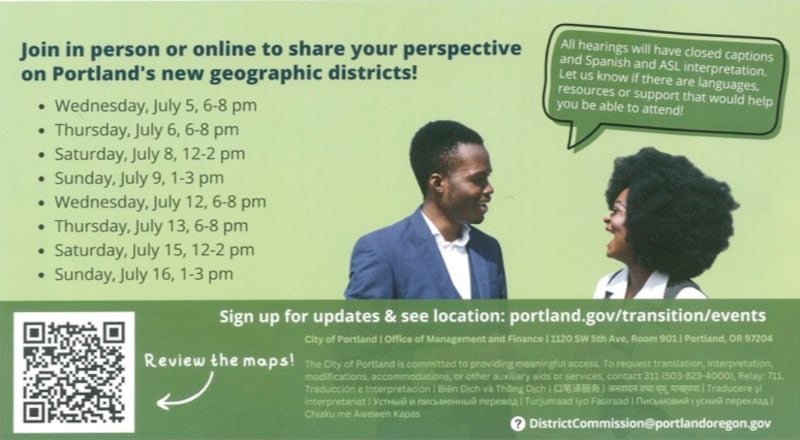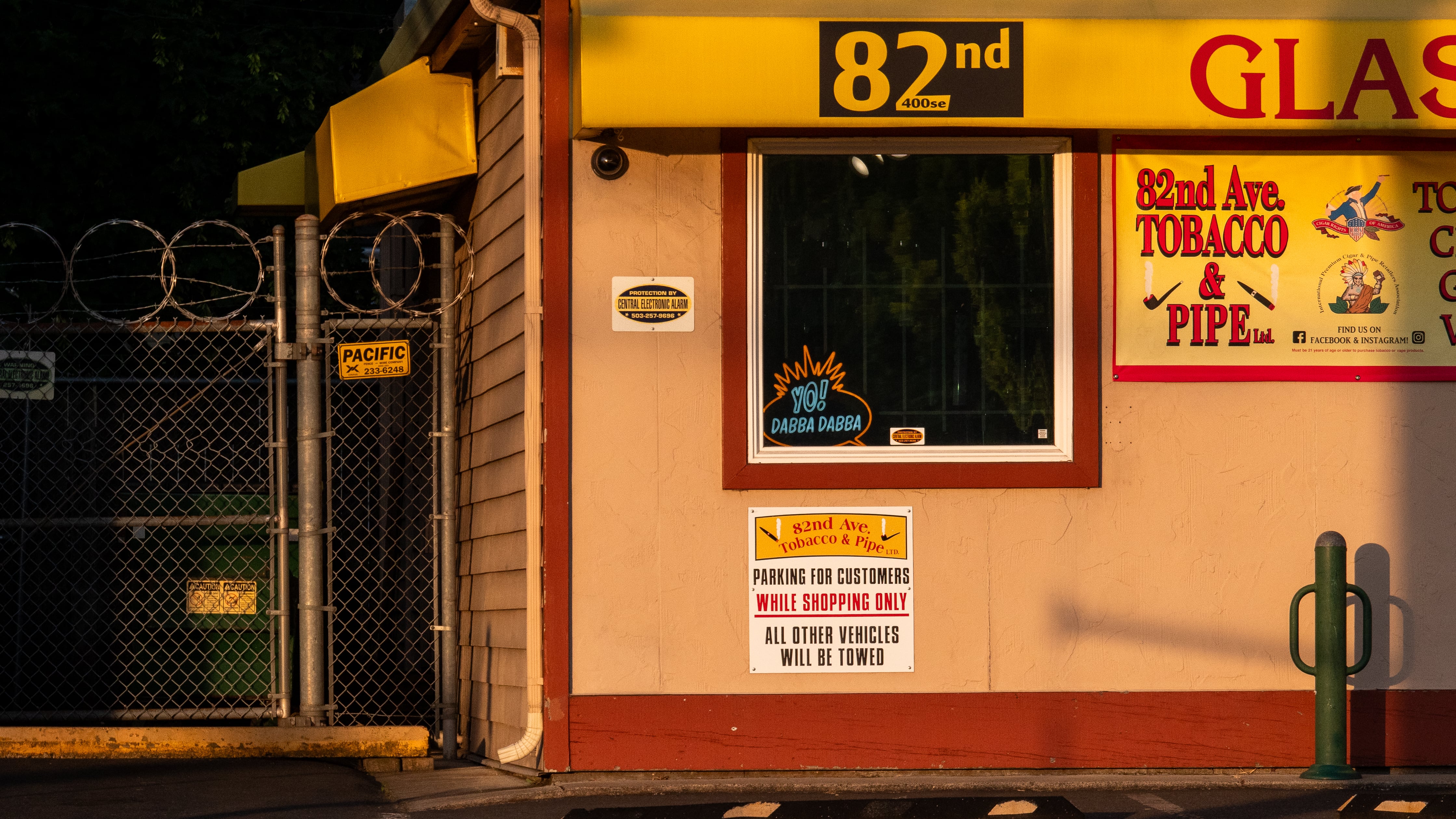The city of Portland wants residents’ input on new voting districts tonight (and in a series of upcoming sessions), but you’d be hard-pressed to figure out on what or to what end from a recent mailer promoting the listening sessions.
The mailer (below) shows three brightly colored (and virtually indistinguishable) district maps labeled with tree names to identify the different proposals—but not much else.


Portlanders voted in favor of a new form of city government in November, agreeing to shift from a system of electing four city commissioners at large to a 12-member city council elected from four geographic districts. The city is in the process of drawing up the new districts.
The Independent District Commission, a 13-member panel appointed by Mayor Ted Wheeler and confirmed by the Portland City Council is leading the process.
The commission began work in March when it set the criteria for the new voting districts before creating drafts of the district maps in April. The next step in the process is to gather community input.
Cue the mailers sent out to Portland residents.
The little pieces of paper were sent out to every household address in Portland—about 280,000 of them. In addition to small maps of the proposed new districts, the flyer reads, “You’re invited—share your thoughts on Portland’s new geographic districts.”
What the flyer doesn’t mention is what the districts are for, why they matter, how they differ or what the consequences of choosing one or the other might be—or much of anything else.
A spokeswoman for the transition team says the flyers were kept simple because they were designed to push people toward the transition website—and that having no text meant there was no need for translation into other languages.
“We always knew that all the information they would need wouldn’t fit on one page,” says Christine Llobregat, a representative for the city’s transition work. “The goal for the postcard messaging was to drive community members to the website so that they could see the latest details on the public hearings.”
Portland residents can also comment on the drafted district drafts in an online comment form, by submitting written testimony, or through a number of other mediums listed on the transition website.
In August, panel members will develop and vote on a final version of the new voting districts before their terms end Sept. 1.
